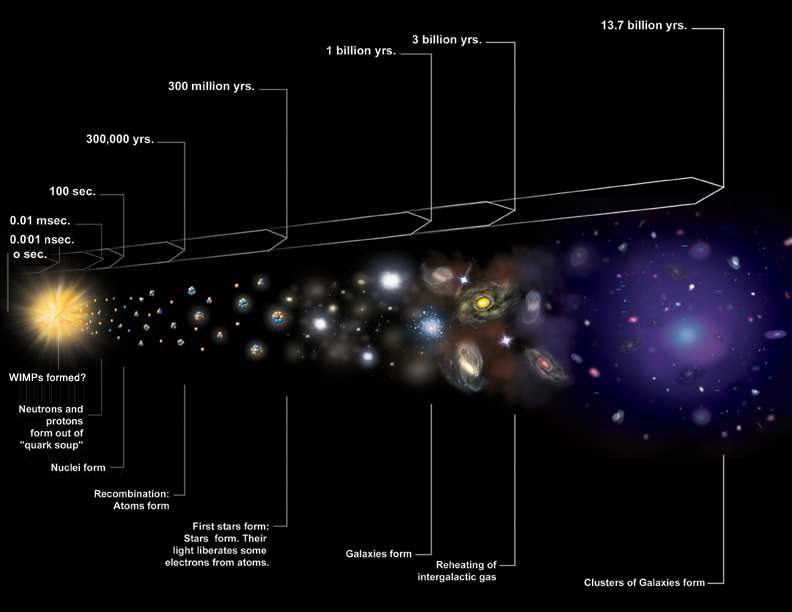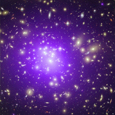In view of the compelling evidence that most of the matter in the universe is dark matter, one of the most pressing questions in modern astrophysics is: What is dark matter?

The nature of dark matter is unknown. A substantial body of evidence indicates that it cannot be baryonic matter, i.e., protons and neutrons. The favored model is that dark matter is mostly composed of exotic particles formed when the universe was a fraction of a second old. Such particles, which would require an extension of the so-called Standard Model of elementary particle physics, could be WIMPs (weakly interacting massive particles), or axions, or sterile neutrinos.
Cosmic Timeline Illustration Credit: NASA/CXC/M.Weiss
There is as yet no answer to this question, but it is becoming increasingly clear what it is not. Detailed observations of the cosmic microwave background with the WMAP satellite show that the dark matter cannot be in the form of normal, baryonic matter, that is, protons and neutrons that compose stars, planets, and interstellar matter. That rules out hot gas, cold gas, brown dwarfs, red dwarfs, white dwarfs, neutron stars and black holes.
Black holes would seem to be the ideal dark matter candidate, and they are indeed very dark. However stellar mass black holes are produced by the collapse of massive stars which are much scarcer than normal stars, which contain at most one-fifth of the mass of dark matter. Also, the processes that would produce enough black holes to explain the dark matter would release a lot of energy and heavy elements; there is no evidence of such a release.
The non-baryonic candidates can be grouped into three broad categories: hot, warm and cold. Hot dark matter refers to particles, such as the known types of neutrinos, which are moving at near the speed of light when the clumps that would form galaxies and clusters of galaxies first began to grow. Cold dark matter refers to particles that were moving slowly when the pre-galactic clumps began to form, and warm dark matter refers to particles with speeds intermediate between hot and cold dark matter.
This classification has observational consequences for the size of clumps that can collapse in the expanding universe. Hot dark matter particles are moving so rapidly that clumps with the mass of a galaxy will quickly disperse. Only clouds with the mass of thousands of galaxies, that is, the size of galaxy clusters, can form. Individual galaxies would form later as the large cluster-sized clouds fragmented, in a top-down process.
In contrast, cold dark matter can form into clumps of galaxy-sized mass or less. Galaxies would form first, and clusters would form as galaxies merge into groups, and groups into clusters in a bottom-up process.
The observations with Chandra show many examples of clusters being constructed by the merger of groups and sub-clusters of galaxies. This and other lines of evidence that galaxies are older than groups and clusters of galaxies strongly support the cold dark matter alternative.
The leading candidates for cold dark matter are particles called WIMPs, for Weakly Interacting Massive Particles. WIMPs are not predicted by the so-called Standard Model for elementary particles, but attempts to construct a unified theory of all elementary particles suggest that WIMPs might have been produced in great numbers when the universe was a fraction of a second old.
A typical WIMP is predicted to be at least 100 times as massive as a hydrogen atom. Possible creatures in the zoo of hypothetical WIMPs are neutralinos, gravitinos, and axinos. Other possibilities that have been discussed include sterile neutrinos and Kaluza-Klein excitations related to extra dimensions in the universe.






